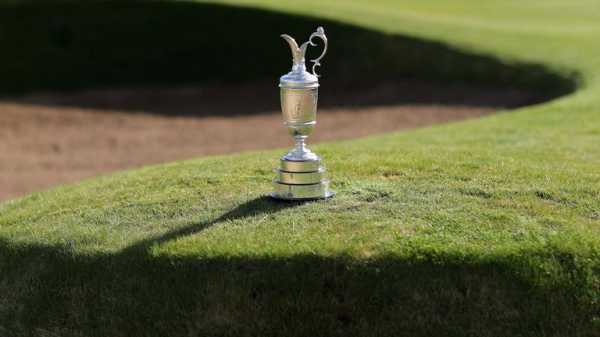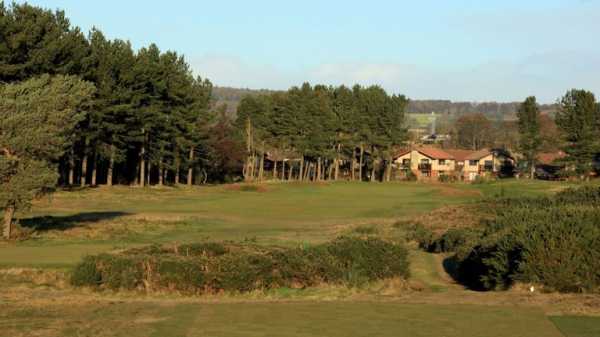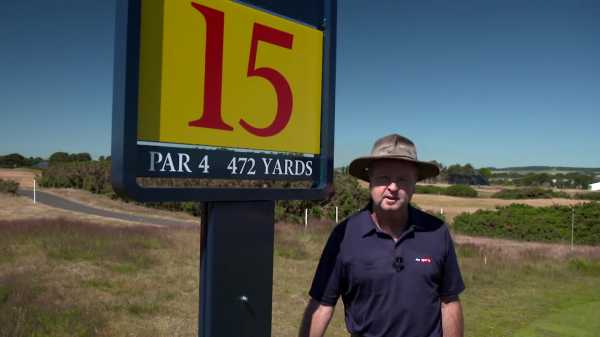
As The Open heads to Scotland, here’s a hole-by-hole guide on how to tackle Carnoustie.
Hole 1, 396 yards, par 4:
As starts to Open Championships go, the first hole at Carnoustie is one of the more straightforward ones. The fairway, which slopes left to right, is generous in width from the tee shot.
Ideally, players will want to find a flat spot on the high ground to the left so they don’t have to play a blind approach to the green, which has just one bunker to its right, with their second.
Hole 2, 461 yards, par 4:
A straight drive is the order of the day on the second hole in order to avoid the bunkers on either side of the fairway.
The approach shot is simple in theory but the 56-yard long green means accuracy will be key if players have any hope of making a birdie.
Hole 3, 350 yards, par 4
‘Jockie’s Burn’ has changed since the last time The Open was held at Carnoustie in 2007 with a new patch of fairway added to the right of the central bunkers.
An accurate tee shot will give players a good birdie chance, but anything pulled slightly to the left will be caught by the bunkers and make an approach to the sloping green far more difficult.

Hole 4, 415 yards, par 4
A slight dogleg to the right on this one. Most players will aim to drive just short of the bunker to the left of the fairway, but care is needed as a ditch sits just behind it.
A good shot will leave a simple approach to the only double green at Carnoustie, which is protected by bunkers to its left and right at the front.
Hole 5, 412 yards, par 4
The key feature of the fifth is the two-tiered green. If the top tier is where the pin is placed then it massively increases the number of club possibilities for the approach.
Longer drivers must also take care as there is a narrow ditch running alongside the fairway.
Hole 6, 580 yards, par 5
‘Hogan’s Alley’ is named after 1953 champion Ben Hogan and it’s where things start to warm up at Carnoustie. The tee shot is tough with bunkers to the right and an out of bounds fence to the left, and weather conditions will likely determine whether players aim for the narrow fairway on that side.
Those who brave the shot towards the left will face an easier shot towards the green.

Hole 7, 410 yards, par 4
An out of bounds threat continues down the left of hole seven while two fairway bunkers will catch any drive that skews to the right.
Most players will aim long to the green due to the bunkers and other dangers at the front.
Hole 8, 187 yards, par 3
The first par 3 at Carnoustie is a tough one. Once again there is an out of bounds to the left while there are two bunkers to the left and to the right of an elevated and narrow green.
A par here will leave you very happy as you approach the end of the front nine.
Hole 9, 474 yards, par 4
Accuracy is vital off the tee in the final hole of the front nine with an out of bounds to the left, a ditch to the right and a smattering of fairway bunkers either side.
The approach shot doesn’t get any easier as the front of the green is surrounded by three well-placed bunkers.

Hole 10, 465 yards, par 4
A very tough start to the back nine. A long and straight drive is essential and players will need to be accurate to avoid the three bunkers to the right of the fairway.
There are also three bunkers at the front of the green, so aiming towards the wide back of the green is likely to be the safer play.
Hole 11, 382 yards, par 4
Players have one of two choices at the tee. They can either shoot long and risk ending up in one of the fairway bunkers, two to the left and two to the right, or play it short and leave a longer approach to the green.
The green itself is also ringed by four bunkers, and it slopes from back to front.
Hole 12, 503 yards, par 4
‘Southward Ho’ is an incredibly long par 4 which offers a massive challenge off the tee. Two big fairway bunkers to the right will punish any player who miscues his drive and there are also ditches on both sides.
The approach to the green is also a tricky proposition, with two sets of bunkers on either side of the front of the green that is dissected by a ridge.
Hole 13, 175 yards, par 3
The shortest hole at Carnoustie is also a tough one that can be massively impacted by the direction of the wind. If the tee shot is played downwind then running through the green becomes a real possibility.
The green itself is very narrow and well protected by a bunker to the front, two to the left and one to the right.

4:02 Wayne 'Radar' Riley describes the challenges facing The Open field on the 14th and 15th holes at Carnoustie. Beware The Spectacles!
Hole 14, 513 yards, par 5
Three fairway bunkers to the left will catch any short drivers and there is also an out of bounds running down that side of the hole.
There are also four bunkers on the approach shot, but it’s quite a short par 5 and good scores will be possible for those who nail it.
Hole 15, 472 yards, par 4
The tee shot is relatively straightforward, as Carnoustie goes, but it’s the approach to the green that will cause the problems at 15.
Those who manage to miss the three bunkers just short of the green could have some joy, but the players who end up inside will find it tough to get themselves out.
Hole 16, 248 yards, par 3
The final par 3 on the course offers up arguably the toughest challenge of the entire round to make par.
Players will try and avoid aiming to the right to avoid the three bunkers to that side of the green. The last time The Open was played at Carnoustie in 2007 there were only 19 birdies on this hole over four days.

Hole 17, 460 yards, par 4
The Barry Burn winds its way through hole 17 at Carnoustie, leading to a difficult tee shot. Players will want to leave their drive on the ‘island’ between the two stretches of water, and ideally as close as possible.
The approach is equally tough with the green, which slopes left to right, protected by three bunkers to the front.
Hole 18, 499 yards, par 4
The Barry Burn again will cause problems off the drive as it flanks the right and left of the hole, while there are also three bunkers to the right of the fairway. There is also an out of bounds running down the left.
Water also crosses the front of the green to punish any short approaches, while bunkers to the left and right of the narrow green are very tough to get out of.

Also See:
Sourse: skysports.com






